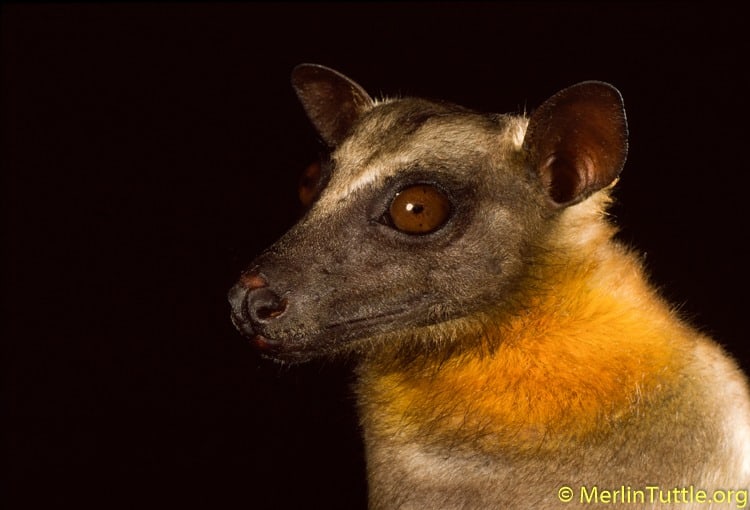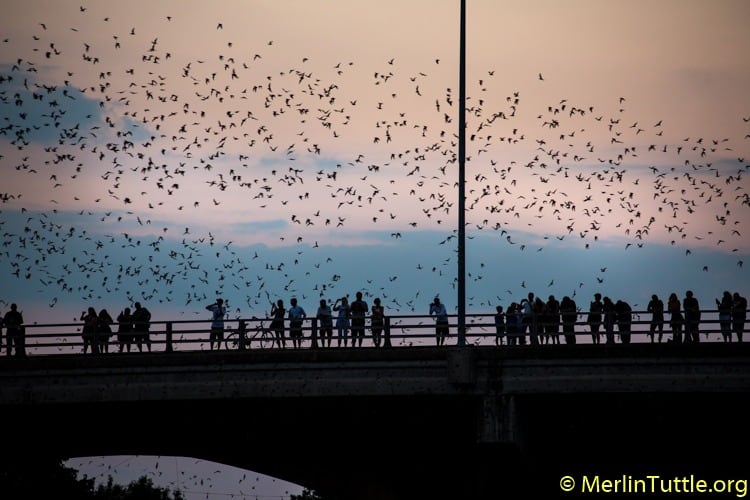Tracking the Impacts of WNS at Wisconsin’s Stonefield Historic Site
“Just like the old days, eh Heather?” Kent softly clicks his tally counter as he sits in his folding chair on the other side of
The past month has seen a virtual explosion of premature speculation presented as though it were now proven fact, much of it traceable to a single article titled, “Bats are global reservoir for deadly coronaviruses,” that appeared in the June 14, 2017 issue of Nature. We’ve already issued a Bat Flash alert responding to this article, and to predecessors, all apparently part of a single cleverly planned campaign.
Sensational speculation has become widely cited as fact1, with spin-off damage that will be exceedingly difficult to reverse. All who truly care about bats have cause to be deeply concerned.
Due to scary speculation attempting to link the SARS outbreak of 2002 to bats, bats have recently become central in the search for viruses2. Thus, rapid advances in viral detection alone may have caused major bias. Also, the number of viruses found in bats is not necessarily indicative of risk.2 Many viruses are innocuous or even beneficial,3 including some that are closely related to deadly ones.4 Finally, the paper in question is based on models, and models are notorious for mistaken conclusions, regardless of the amount of data analyzed.5

Proponents of such speculation still cannot explain why hundreds of bat biologists, millions of people who eat bats, and the millions more who share cities with huge bat colonies are no less healthy than others. They can’t explain why bats artificially infected with Ebola haven’t become contagious or why virologists haven’t even been able to find live virus in the thousands of bats examined. Certainly, like all other mammals, bats must be capable of harboring at least a few dangerous viruses. Nevertheless, bats still have one of our planet’s finest records of living safely with humans.1




Michael Osterholm, director at the Center for Infectious Disease Research and Policy at the University of Minnesota, Twin Cities, notes that scientists should be careful to distinguish between what is possible and what is likely. He points out that rabies, for example, is widespread in bats and readily infects humans. However, “If that was enough for transmission we should all be dying of bat rabies in the U.S.” The virus can be transmitted only if an infected bat bites a human. That rarely happens, so transmission is rare.2
Additionally, we must question why so many limited health resources are being diverted to some of the world’s rarest diseases. Even if we lump all these together (including SARS, MERS, Nipa, Hendra, Marburg and Ebola) they have caused fewer than 20,000 deaths in two decades.8 In contrast, dog-transmitted rabies alone kills 60,000 humans annually9 with hardly a ripple of comment. And even that is tiny compared to other sources of human mortality, such as obesity10, which are far easier to prevent.
The only logical explanation for such a skewed emphasis appears to be solicitation of hundreds of millions of dollars in grants11for otherwise difficult-to-justify research.1 The last campaign against bats centered on rabies, rendering bat conservation nearly impossible in the 1970’s, while huge profits went to rabies and pest control industries.12 This time the profits are going to virus hunters11 with even more potential for harming bats.

Anyone paying attention will see a regularly repeated strategy. Over and over, the most sensationally exaggerated stories cite the same virus hunting scientists and their organization.13-16 They present themselves as bat-loving conservationists, but it’s time to ask if perhaps they don’t love big grants a bit more than bats!
Their strategy is becoming quite clear. Begin with a sensational headline, followed by a few paragraphs of apparently supporting statements from similarly motivated scientists. Appear to be bat conservation-minded by often saying that it’s not the bats’ fault. It’s because we’re invading their territory. 11,13-16 Sometimes (far from consistent) ending with an admission that the speculation has yet to be proven, including qualifying statements that bats are valuable and should never be killed. Never mind abundant evidence that people don’t tolerate, and often kill, animals they fear, particularly if bats are believed to be disease-laden.12
As in the Nature example, most subsequent reports focus on the sensational beginning, often completely omitting the more moderate ending, exactly what a clever PR firm, attempting to foment fear of bats would advise. Unfortunately, it’s working like magic for scientists who know better. Their greed isn’t just harming bats. It’s also harming public health,1 and eventually will compromise the credibility of science in general at a time when it is most needed.
Currently, there is no better way to help bats than for readers to complain to publishers of irresponsible stories. We have already addressed the original one in Nature, but the many subsequent publishers, who typically focused only on the worst elements, also should be contacted. We encourage you to continue sharing your opinions with them and thank you for your participation on behalf of bats thus far.

References
Love our content? Support us by sharing it!
“Just like the old days, eh Heather?” Kent softly clicks his tally counter as he sits in his folding chair on the other side of
An important new study, recently published in Science and widely covered by major newspapers like The Guardian, The Washington Post, and The New York Times, has
On March 6, 2024, the Wall Street Journal presented findings from the University of Leeds in their opinion piece, “Why Scientists Love Chasing Bats; The
Believe it or not, bats have one of our planet’s finest records of living safely with humans. Despite frequent claims to the contrary, they harbor
2024 © Merlin Tuttle’s Bat Conservation. All rights reserved.
Madelline Mathis has a degree in environmental studies from Rollins College and a passion for wildlife conservation. She is an outstanding nature photographer who has worked extensively with Merlin and other MTBC staff studying and photographing bats in Mozambique, Cuba, Costa Rica, and Texas. Following college graduation, she was employed as an environmental specialist for the Florida Department of Environmental Protection. She subsequently founded the Florida chapter of the International DarkSky Association and currently serves on the board of DarkSky Texas. She also serves on the board of Houston Wilderness and was appointed to the Austin Water Resource Community Planning Task Force.
Michael Lazari Karapetian has over twenty years of investment management experience. He has a degree in business management, is a certified NBA agent, and gained early experience as a money manager for the Bank of America where he established model portfolios for high-net-worth clients. In 2003 he founded Lazari Capital Management, Inc. and Lazari Asset Management, Inc. He is President and CIO of both and manages over a half a billion in assets. In his personal time he champions philanthropic causes. He serves on the board of Moravian College and has a strong affinity for wildlife, both funding and volunteering on behalf of endangered species.